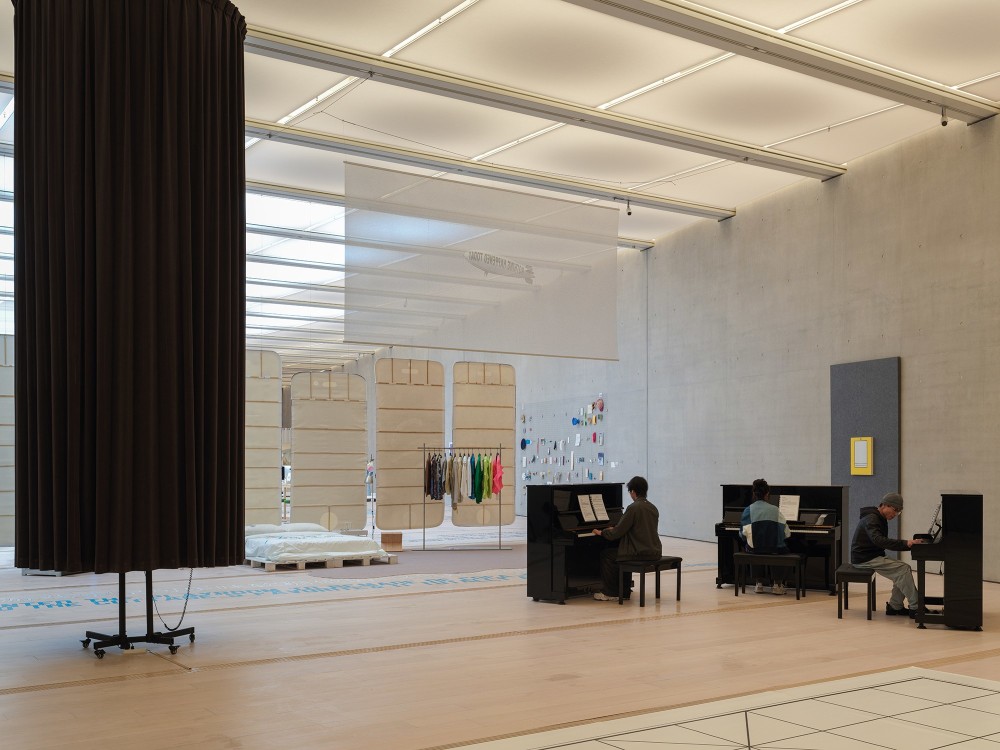
The exhibition Mind the Gap presents a dialogue between the two artists, Darren Bader and Li Ming, who are situated in geographically distant locations - New York and Hangzhou, respectively. This is Darren Bader’s first institutional exhibition in China. The exhibition features a collection of approximately 70 works by Darren Bader and Li Ming, spanning over a decade. Some of these works are being exhibited for the first time, including collaborations specifically created for the exhibition. The exhibition creates an immersive residence called "Apartment 401", showcasing a clever and humorous blend of mixed media. Together, these elements create a subtle and poetic display that invites visitors to engage with the works on multiple levels.
Over the course of three years of preparation for the exhibition, Darren Bader and Li Ming had to rely on transmitting their works through WeChat automatic translation in WeChat groups as their primary means of communication and cooperation. Despite this limitation, the collaboration reveals their distinct perspectives and sense of humour, highlighting where their diverse curiosities about the world intersected. Through this process, six sets of mutually referential keywords were distilled from their ideas: animal/metaphor, value/vacuum, coincidence/mistranslation, game/trade, digital/physical, and absurd/fun. Despite the potential language barrier between artists, the works always echo each other. The exhibition seeks to highlight the collision and resonance of the thoughts of these two fast-thinking and humorous artists travelling across both visible and intangible distances.
Darren Bader was born in Connecticut in 1978 and studied film production and art history at New York University. Typically, his work involves utilising diverse media, where seemingly arbitrary arrangements and the juxtaposition of objects convey a humorous or absurd impression. Born in 1986 in Yujiang, Hunan, Li Ming graduated from China Academy of Fine Arts with an undergraduate degree in 2008. His work comprises mostly of images and installations. Rather than focusing on macro-level issues, the artist expresses individual emotions and fragments of real-life situations through theatrical means. This is achieved through a complex and diverse visual language that effectively conveys the artist's sensitive inner activities. Despite the potential language barrier between artists, their works always echo each other.